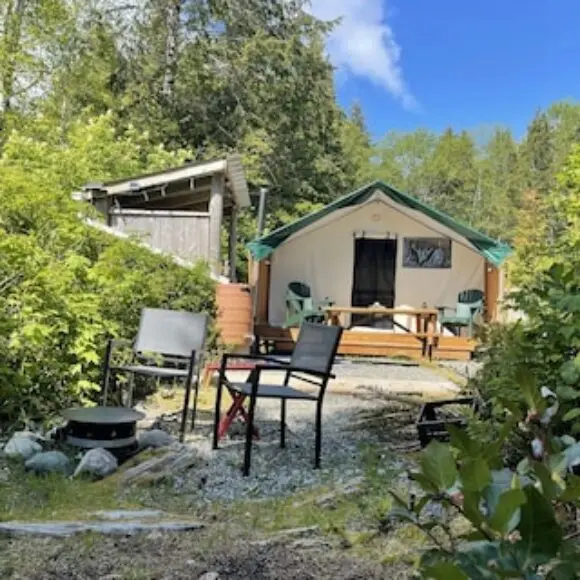Hotel Two Bedroom Farmhouse – 5 Min To Spider Lake

Two Bedroom Farmhouse – 5 Min To Spider Lake
Hotel Two Bedroom Farmhouse – 5 Min To Spider Lake reviews
Planning your ferry trip from Qualicum Beach? Stay at Two Bedroom Farmhouse – 5 Min To Spider Lake; rated and is available from CAD $ 225. Two Bedroom Farmhouse – 5 Min To Spider Lake is perfectly situated near the ferry routes, and can be reserved directly through Trivago.
📍 Address Two Bedroom Farmhouse – 5 Min To Spider Lake
707 Spider Lake Rd, V9K 2L7, Qualicum Beach, Canada
FAQ
How much does it cost to take a vehicle on the Horseshoe Bay to Departure Bay ferry Vancouver crossing?
The cost of taking a vehicle on the Horseshoe Bay to Departure Bay ferry Vancouver crossing is determined by several factors, including the size and type of your vehicle, as well as the time of year. To get precise pricing, it’s best to check the Horseshoe Bay to Departure Bay vehicle fares. Fares typically include a base rate for the vehicle and additional charges for each passenger. During peak season, especially summer months and holiday periods, fares may be higher. It’s also worth noting that fuel surcharges can be added to the total cost.
What are the overnight parking regulations at the Village Bay ferry Vancouver terminal?
The overnight parking regulations at the Village Bay ferry Vancouver terminal are designed to ensure fair access and efficient use of parking spaces. To understand the specific rules and any associated fees, please consult the Village Bay overnight parking regulations page. It’s important to be aware of any time limits or restrictions before leaving your vehicle overnight.
Ferry Vancouver
Emergency procedures and safety protocols ensure passenger security throughout ferry crossings. Modern vessels feature comprehensive safety equipment and trained crew members. Regular safety drills and equipment inspections maintain the highest safety standards for all passengers and vehicles.
Environmental initiatives by ferry operators focus on reducing emissions and protecting the sensitive marine ecosystem of the Salish Sea. Modern vessels incorporate fuel-efficient technologies and waste reduction programs. Passengers can contribute to environmental protection by following onboard recycling and conservation guidelines.
Ferry pricing varies by route, season, and vehicle type, with significant differences between passenger fares and vehicle transportation costs. Peak season rates apply during summer months when tourism demand is highest. Multiple pricing tiers accommodate different traveler needs, from foot passengers to large RVs and commercial vehicles.
Fuel and vehicle services are available at some ferry terminals, allowing travelers to prepare for their Vancouver Island adventure. Terminal locations often feature gas stations, convenience stores, and automotive services. Pre-trip vehicle inspections ensure safe travel on Vancouver Island’s diverse road conditions.
Seasonal variations significantly affect ferry operations, with summer bringing increased frequency and capacity to handle peak tourist demand. Winter schedules may have reduced sailings, while spring and fall offer moderate crowds with pleasant weather. Holiday periods require advance planning due to extremely high demand for popular routes.
Wildlife viewing opportunities during ferry crossings include orcas, seals, dolphins, and diverse seabird species throughout the Salish Sea. The best viewing occurs from outdoor decks, and crew members often announce wildlife sightings over the ship’s public address system. Binoculars enhance the wildlife watching experience during these scenic journeys.
Connecting transportation from ferry terminals includes public transit, rental cars, taxis, and ride-sharing services. Victoria’s Swartz Bay terminal connects to downtown Victoria via public bus service. Nanaimo terminals provide access to Island-wide transportation networks for exploring Vancouver Island’s diverse attractions and natural areas.
Food and dining onboard ranges from casual cafeterias to full-service restaurants depending on the vessel and route. Local British Columbia ingredients feature prominently in menu offerings. Passengers can also bring their own food and enjoy meals in designated dining areas or outdoor spaces.
Vancouver Island ferry terminals feature modern amenities including restaurants, gift shops, and comfortable waiting areas. Tsawwassen and Swartz Bay terminals offer extensive facilities with multiple dining options, retail stores, and children’s play areas. Terminal locations provide convenient access to ground transportation, rental cars, and connecting bus services.
Cultural experiences begin during ferry travel with onboard art displays featuring local Pacific Northwest artists. Indigenous cultural elements appear in vessel names, artwork, and interpretive displays. These features introduce visitors to the rich cultural heritage of Vancouver Island and coastal British Columbia.
Ferry travel tips for first-time visitors include arriving early, bringing layers for changing weather conditions, and planning ground transportation in advance. Understanding terminal layouts and boarding procedures reduces travel stress. Experienced ferry travelers recommend booking accommodations on Vancouver Island in advance, especially during peak season periods.




